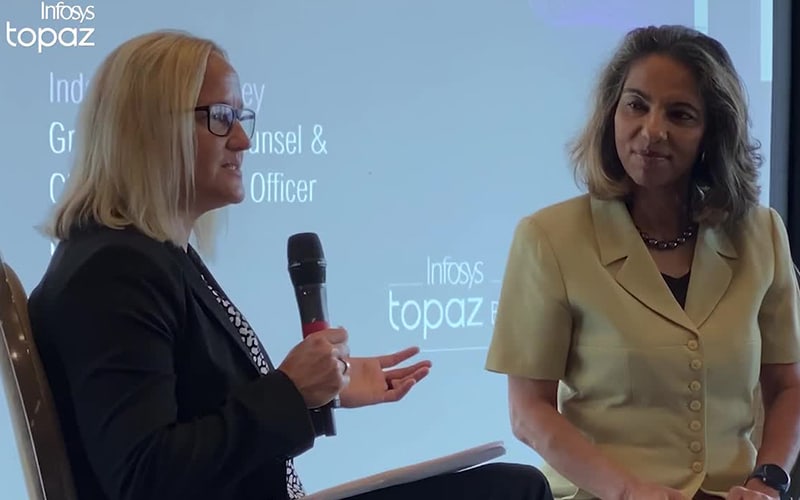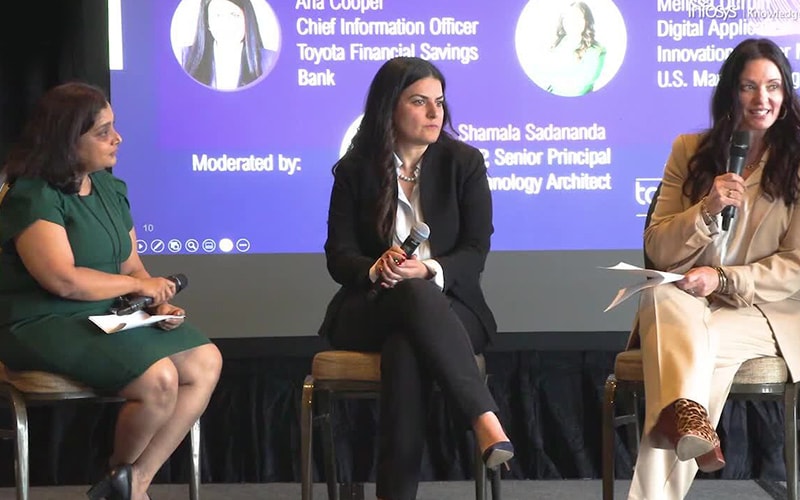Insights
- Digital transformation leads to better consumer experiences, an always-on enterprise, composable digital assets to accelerate modernization, and intelligent automation for zero-touch processes.
- However, the ground truth is that only the finest firms achieve these milestones.
- What’s needed is a new way to balance business and operating models.
- The digital backbone provides a platform from which new projects are launched and delivered at pace and scale. Employees have all-time access of enterprise IP – knowledge, platform services, process, data and AI, resources.
- The digital backbone comprises three layers.
- The first layer can be seen as the “platform of platforms”, enabling software infrastructure for digital transformation.
- The second layer, or framework layer, provides patterns and approaches for digital transformation.
- The third layer consists of all use cases of the digital backbone and digitalizes existing capabilities that improve business outcomes.
Organizations today know the dire need to transform digitally. While many were rolling out new practices even before the pandemic, the events of the past two and a half years accelerated and forced a great deal of change.
Now when things return to normal, companies assess the results of alterations done to withstand the pandemic. Are they any better off than they were before everything became digitized?
In many ways, yes.
Employees now have access to new apps and are treated more like consumers of technology than simply producers. Resilience, the cornerstone of our thought leadership, is at the center stage of digital transformation. Executives now preach how innovation, better data, ESG initiatives, and a more optimistic workforce motivate to prepare for any future calamities that might arise.
The problem with digital transformation
Digital transformation leads to better consumer experiences, an always-on enterprise, composable digital assets to accelerate modernization, and intelligent automation for zero-touch processes (see Figure 1).
Figure 1. Hallmarks of leading digital firms

Source: Infosys
However, the ground truth is that only the finest firms achieve these milestones.
In a rush to implement new technology and rewire aging business processes, most firms are left with an untidy mix of home-grown and extraneous bolt-on systems, with little connectivity and consistency between the two. All of them utilize the cloud, as our Cloud Radar 2021 research found, but integration is a problem.
Digital transformation must focus on tangible business outcomes, including net-zero and creating new markets of customer demand.
Customers demand superior experiences, but organizations don’t know what to modernize and how to use automation and data to speed up innovation. They don’t recognize what applications are synced to others and how they are used. In fact, only 45% of business leaders realize real-time visibility with cloud, according to Forrester research commissioned by Infosys this year. This, in spite of the fact that 72% of leaders want more control and transparency of applications, and 72% say they want to see more agility and simplicity in application delivery.
Data is often locked in legacy applications, and significant modernization efforts are needed to surface enterprise-wide insights. Both internal and external customers need instant access to these insights, securely and privately. However, governance processes are inept; there are only a few checks on how software and data are stored, circulated, and embellished. In our research, we found that 55% of business leaders want to see better governance of cloud projects against business outcomes.
What’s needed is a new way to balance business and operating models.
The transformation must focus on tangible business outcomes such as net-zero, digital experience, and innovation. Leaders should onboard new practices, including Agile techniques and modernization of the legacy landscape.
This way, firms will revitalize their core assets, shift to a new, connected way of working, and ensure business processes are rewired where necessary to make different kinds of products.
Digital backbone (or runway) supports this new paradigm, as documented in our book “The Live Enterprise: Create a Continuously Evolving and Learning Organization”.
The solution – digital backbone
The answer to the problem of digital transformation, innovation, and customer delight is an organization built for speed (the 21st century mantra) and efficiency (the major success of the 20th). This means an inclusive infrastructure for all teams throughout the organization, with access to instant data, software, and technologies.
The digital backbone provides a platform from which new projects are launched and delivered at pace and scale. Employees have all-time access of enterprise IP – knowledge, platform services, process, data and AI, resources. Firms become live organisms that respond to new queries and events in real time, with a focus on customer and product.
Amazon has developed a digital backbone and can innovate quickly to develop new platforms, features, and functionality. The backbone provides tools that are used across the business to rapidly experiment and roll out successful ideas.1
This backbone can be refashioned from aging organizational architecture and culture. Core competencies are “unbundled” – that is, disaggregated and abstracted – moved into, for instance, a microservice container, resurfaced as API-driven components, and then rebundled to deliver new services and processes that suit new requirements.
In this arrangement, successful ideas are rolled out quickly from one platform to another within an organization, as these ideas are built on the same digital infrastructure. Teams don’t have to wait for data from other departments or reformat databases to keep in sync with what other divisions are creating. This system is disruption-tolerant, harnessing the cloud continuum (both proprietary and open-source), existing technical capabilities and tools, and increasingly Agile execution practices (including DevSecOps).
Our recent Modernization Radar 2022 research highlighted that this technique (implemented in a phased manner) increases fluidity of transformation programs. Firms can quickly launch digital initiatives that are intelligent, automated, and integrated with legacy systems, making them more resilient, customer-focused, and productive.
Other outcomes include a more collaborative ecosystem and more efficient, automated operations. Further, the ability to become composable breaks down the way business is run into bite-sized services and delivers faster time to market; application performance improves through web-scale architecture; and, teams doing the hardest work become a catalyst for innovation.2
The Infosys approach
The digital backbone comprises three layers (see Figure 2).
Figure 2. Three layers of the digital backbone

Source: Infosys
First layer – platform
The first layer can be seen as the “platform of platforms”, enabling software infrastructure for digital transformation.
According to our research, a platform-based approach brings significant opportunity. Organizations see value in key platform capabilities to track and optimize cloud efficiency. In fact, 59% of IT leaders see attributes such as frameworks and standardized processes as a core need.
The platform is at once:
- API-first and event-driven: The APIs and event mesh (an infrastructure layer for distributing events among decoupled applications, cloud services , and devices) enable composable business and ensure reuse of assets at scale.
- Data-driven: Data is freed from legacy applications for use in digital engagements.
- Cloud-native: Web-scale transformation requires cloud-first architecture. Hyperscalers such as AWS and Google Cloud are used for ease of use.
- Low code, no code (LCNC) enablement: Employees take a model-driven approach through LCNC to build new digital assets.
- Digital brain: This is the thrust of all intelligence in the backbone, making the whole runway autonomous.
Second layer – framework
Here, patterns and approaches for digital transformation come in. Infosys’ engagements broadly comprise the following four levels:
1. Modernize: Modernization of existing applications and their communication paths involves -
- Decoupling legacy and digital: Firms take a less risky route to execute digital strategies over legacy systems, instead of the pain of wholesale migration. A large U.K.-based telco’s digital backbone enabled the implementation of a “headless” sales and servicing engine on top of a legacy open source software (OSS) stack. Consequently, digital sales increased by 40 percentage points and net promoter score (NPS) by 30 percentage points.
- Modernizing the core: A wrap and renew strategy for legacy core systems is key here. A large European bank implemented a core banking API that combined four core banking systems, fueling speed and reducing time to market by 30%.
2. Integrate: Firms struggle to integrate applications, services, and data. Organizations look at both cloud and on-premises systems. Digital backbone helped a large U.S. manufacturer integrate a SAP S4 ecosystem with its legacy landscape and other cloud apps. This improved time to market by 30% through a pattern based approach and reuse of components.
3. Automate: This framework layer is all about straight-through-processing (STP). This reduces manual interventions (otherwise known as “native automation”) in business processes and creates an organization where speed of delivery is prevalent. It comprises the below three steps -
- Cloud apps integrated into a process construct: A large CPG company used the framework to automate its entire order-to-cash process.
- Sentience: A global cosmetic company implemented a sentient layer combining APIs, an event mesh, and a knowledge graph (intuitively linking data and then using AI to identify anomalies and predict outcomes). This identified failures in the product introduction process and improved business responsiveness by 25%.
- Composable business: Reimagine business processes through visibility and control.
4. Democratize: Finally, the fourth pattern enables all actors in the ecosystem to access data and services. In this way, cloud adoption is easier, driving the move toward multicloud, a feature of innovation and scalability that high performers in our Cloud Radar 2021 research are steadily moving toward.3 This framework reduces cloud migration timelines from 9 months to 3 months, as experienced by a large U.S. regional bank.
Third layer – use case
The case layer consists of all use cases of the digital backbone. This layer digitalizes existing capabilities that improve business outcomes, including customer-centricity, speed, scalability, and more. An architecture fitness function should also continuously measure use case quality, and include playbooks to define and codify guided practices.
Digital backbone is not just an IT project, but a support system that improves overall business health.
The need for leadership, Agile, and upskilling
Digital doesn’t work when leadership isn’t onboard. A good digital architecture must have the ears of the executive suite and a strategic budget. Leaders must understand the nuts and bolts of this metamorphosis and talk to engineers and product owners on the ground.
Also important is to move toward an Agile operating model, where teams are guided by objectives and key results (OKRs). This means digital transformation is part of the organizational mission statement, much as Infosys has done with “live enterprise”. We have written extensively about what the future operating model should look like. The firm should be increasingly platform- and product-centric, and built around the value that flows to the customer. Small teams of cross-functional practitioners should work in an Agile cadence iteratively, delivering the new capabilities and services in a phased approach. This way, the whole firm is upskilled and reskilled to work with new technologies such as AI, RPA, data analytics, and microservices. Digital backbone offers all of this
Senior executives should allocate strategic budget to drive digital architecture
Of course, we don’t pretend that creating a 21st century organization is easy. For cautious firms, an expert partner can put in place coherent roadmaps, ensuring business-IT collaboration from top to bottom. To deliver a change, the focus should be on consumption, coverage, adoption, business impact, and usage of shared infrastructure.
Do it right and the gains are significant. Shared digital infrastructure enabled Infosys to launch new business opportunities in weeks (instead of months), accelerating the pace of service offerings. Well architected and implemented live enterprise capabilities provide velocity and evolvability.
To establish a plug-and-play business model – the kind Amazon, and Infosys are pursuing – digital backbone is vital. Without that, ideas are harder to scale, and innovation is flat and isolated.
Digital backbone makes organizations more efficient, effective, speedy, and customer-first to win over evolving shareholders and become among the top of the Fortune 500.
References
- The Live Enterprise: Create a continuously evolving and learning organization, Jeff Kavanaugh and Rafee Tarafdar, 26 January, 2021, McGraw Hill.
- Gartner keynote: The future of business is composable, Kasey Panetta, 29 October, 2020, Gartner.
- Cloud Radar 2021, IKI.





